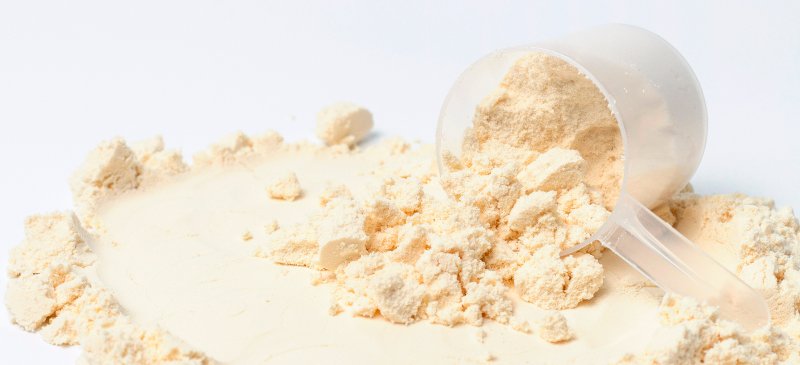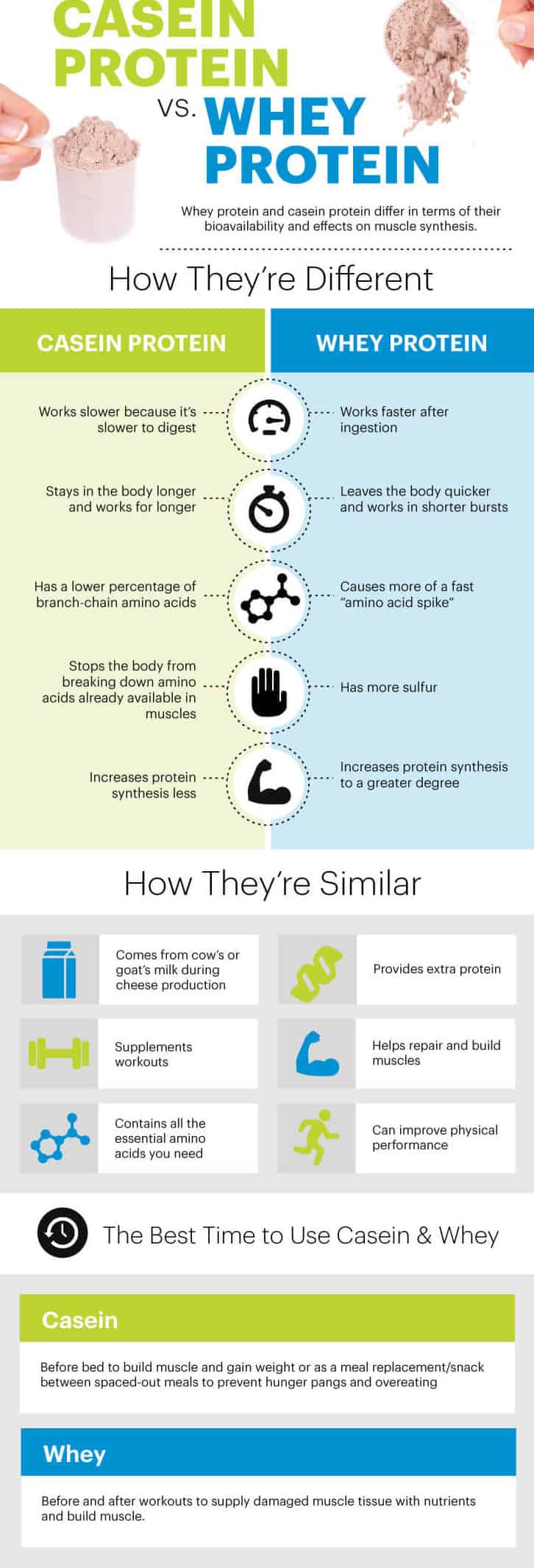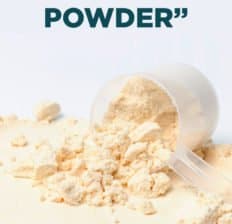This Dr. Axe content is medically reviewed or fact checked to ensure factually accurate information.
With strict editorial sourcing guidelines, we only link to academic research institutions, reputable media sites and, when research is available, medically peer-reviewed studies. Note that the numbers in parentheses (1, 2, etc.) are clickable links to these studies.
The information in our articles is NOT intended to replace a one-on-one relationship with a qualified health care professional and is not intended as medical advice.
This article is based on scientific evidence, written by experts and fact checked by our trained editorial staff. Note that the numbers in parentheses (1, 2, etc.) are clickable links to medically peer-reviewed studies.
Our team includes licensed nutritionists and dietitians, certified health education specialists, as well as certified strength and conditioning specialists, personal trainers and corrective exercise specialists. Our team aims to be not only thorough with its research, but also objective and unbiased.
The information in our articles is NOT intended to replace a one-on-one relationship with a qualified health care professional and is not intended as medical advice.
Casein Protein Benefits for Muscle Growth & Recovery
April 29, 2024

The most popular diary protein powder in the world is whey protein, loved by athletes and those both looking to lose or gain weight. Whey protein has been the go-to muscle enhancer for decades, but there’s another valuable dairy protein supplement out there: casein protein.
One of the top sources of long-lasting amino acids, casein protein — sometimes called “the other protein powder” — provides protein in a similar fashion to whey.
What makes casein protein different from whey protein, pea protein powder, or even whole foods like eggs and chicken breast? One of casein’s greatest advantages is the timing of how it’s absorbed, plus how long it lingers in the body. Both factors make it beneficial for building muscle fast and preserving the body’s lean muscle tissue.
Casein’s amino acids stay where they need to be in order to help build muscle tissue for many hours, as opposed to being flushed from the body relatively quickly. Learn more below.
What Is Casein Protein?
Derived from milk, just like whey protein, casein protein is actually a naturally more abundant source of branched-chain amino acids (BCAAs). That’s why it’s sometimes simply called “milk protein,” since around 80 percent of the protein found in cow’s milk is casein. (It’s also why it allergenic for some.)
Within milk, casein is the “curd” that has gel-forming capabilities. It also makes up 20 percent to 40 percent of human breast milk. It’s also abundant in raw sheep cheese, a pure source of casein.
Casein, like whey and other high-protein foods, is made up of various “building blocks” called non-essential and essential amino acids. The human body is able to make certain amino acids on its own (called non-essential) while others it cannot (called essential), making the essential kinds crucial to get through the foods you eat.
Casein protein powder is created in a lab from dehydrating parts of milk. The problem is that many forms are denatured and isolated, and may cause health issues. For that reason, you’ll be advised to try to find casein protein that is from A2 beta-casein rather than A1 casein.
You can usually find it in most health food stores and might come across a variety of flavors. What you’ll probably notice is that for every brand of casein protein powder available, about five different whey protein powders are also sold.
Health Benefits
When used at the time right, high-quality casein protein is useful for multiple health benefits. Let’s go into a little more detail about some of its major benefits and uses:
1. Helps Build Muscle Mass
Casein helps build new muscle tissue and promote lean muscle growth. It’s usually known as an “anti-catabolic” protein.
What exactly does this mean? Your body catabolizes, or basically tears down muscle tissue, to get the amino acids that are stored inside muscle protein. It uses these stored amino acids for energy and helping with various functions, such as growth and development.
The more you exercise, the more your body is going to search for available protein to keep it functioning.
2. Lasts Longer than Other Protein Sources
Although it’s absorbed quickly, casein is still considered a relatively “slow-digesting” protein because of the length of time its amino acids stay within the bloodstream. Just like slower-releasing carbohydrates are beneficial as opposed to fast-acting types that can spike blood sugar rapidly, protein foods can sometimes work the same way.
The body can slowly digest casein protein, which means muscle tissues have a longer opportunity to use the amino acids for repair work and growth. As you’ll learn below, the timing of casein definitely has its advantages, but depending on your goals there are certain times you want to skip it and use a faster-acting protein instead.
3. Assists Muscle Recovery
Did you know that sleep is one of the most important times for building muscle mass and benefiting from the hard work and exercise you do during the day? That’s because while you’re sleeping, your body is works to repair areas that have been overly stressed during the day.
One of the ways you can take advantage of this biological process is using casein protein to give your muscles an extra boost.
Casein protein is believed to linger in the bloodstream for up to seven hours, which is one reason that bodybuilders love consuming it right before bed. In the fitness community, casein protein has gained a reputation for being an “ideal nighttime snack.”
One 2020 study showed that post-exercise ingestion of at least 40 grams of casein protein, roughly 30 minutes before sleep and after a resistance exercise routine in the evening, may assist muscle recovery.
Another study found that casein protein ingested immediately before sleep is effectively digested and absorbed, helping stimulate muscle protein synthesis and improving “whole-body protein balance” following exercise. Throughout the night while someone is sleeping, amino acids work to build muscle fibers back stronger.
In addition to having casein before bed, it makes a great shake/snack to have between meals when you’re going several hours or more without eating.
4. May Help Curb Your Appetite and Help with Weight Loss
Even if you only exercise in a “moderate” way and aren’t looking to put on muscle mass, protein supplements can still be beneficial when it comes to curbing hunger and cravings. Many people choose to use protein powders for their convenience coupled with the fact that they can suppress appetite to a certain extent.
Ever notice when you eat a carb- or sugar-heavy breakfast, but skip out on protein, that you’re reaching for something else to eat shortly after? Protein is very satisfying and can help you go from one meal to the next without hunger pangs and sugar cravings.
Most people who include a protein source with every meal (and even snacks) find that they can manage their hunger and food choices better overall. While the effects differ depending on the person, some people do really well using protein powders along with other nutrient-packed ingredients in smoothies as an easy breakfast, a high-protein snack or even as a meal replacement.
How well can casein protein control your hunger compared to whey protein? A study published in the British Journal of Nutrition found that both work very similarly.
Researchers compared the hunger-reducing effects of hydrolyzed casein protein, intact casein and intact whey protein in 24 overweight adult men and women. They wanted to determine the effects these different protein supplements have on overall energy expenditure (EE) and appetite regulation, essentially the amount of “calories in versus calories out.”
The two types of casein and the one type of whey protein all had similar effects over the course of 24 hours on EE and appetite, although some results suggested whey protein seemed to work somewhat better when it came to positively affecting the subjects’ resting metabolic rates.
Other casein benefits include:
- Repairing broken-down muscle fibers after a workout while you sleep
- Restoring nitrogen balance during muscle recovery
- Regulating blood sugar levels
Nutrition Facts
Depending on the brand of casein protein powder you buy, the calories and protein amounts can vary. To get the most benefits, look for a brand that’s low in sugar or sweetened naturally with organic stevia extract and natural sweeteners like cocoa powder or vanilla extract.
One-third cup serving (30 g) of unflavored Nutricost casein protein powder contains about:
- Calories: 110
- Total Carbohydrates: 0 g
- Fiber: 0 g
- Sugar: 0 g
- Total Fat: 0 g
- Saturated Fat: 0 g
- Polyunsaturated Fat: 0 g
- Monounsaturated Fat: 0 g
- Trans Fat: 0 g
- Protein: 24 g
- Cholesterol: 20.1 mg (7% DV*)
- Sodium: 24.9 mg (1% DV)
- Calcium: 579 mg (45% DV)
- Potassium: 135 mg (3% DV)
- Vitamin C: mg (% DV)
*Daily Value: Percentages are based on a diet of 2,000 calories a day.
Wondering how much casein protein you should use at one time or maybe how much protein you need in general? Protein needs vary from person to person depending on many factors, but some general guidelines for using casein protein are as follows:
- about 0.68–1 gram of protein per pound of body weight if you’re an athlete or highly active person
- about 0.45–0.68 gram per pound of body weight if you’re looking to lose weight and tone up
- about 0.36 gram per pound of body weight to generally maintain your health and weight
To put this into context, a women who weights 140 pounds who’s active and wants to improve her diet might aim to eat up to 63–95 grams of protein a day, which means a serving of casein protein could cover her needs for one of her three main meals.
How to Use
When should you take casein protein? It’s long been recommended to use casein protein before bed (if your goal is to build muscle and potentially gain weight) or as a meal replacement/snack between spaced-out meals.
Remember that casein is digested slowly, which means following a workout it may take longer than other types of protein (such as whey) to reach your muscles.
While some other studies have found evidence that taking casein before bed can be helpful for boosting metabolic rate and strength in untrained individuals who start strength training, today it’s generally believed that you should focus on “the strategy of achieving specific daily protein levels versus specific timing of protein ingestion for increasing muscle mass and performance.” In other words, it matters more that you consume the protein you need over the whole day rather than the exact timing.
Since you want to supply your muscle tissue with nutrients following exercise, using casein over faster-acting protein sources won’t give you the benefits of an immediate rush of amino acids that you’re after. Because whey protein is so quickly absorbed and digested, it makes the better choice following a workout. (It’s also why you’ll find whey-casein combination protein powders on the market.)
A1 vs. A2 Casein
Milk is composed of about 85 percent water and 15 percent sugar (called lactose), protein, fat and minerals. Among the protein compounds in milk, there is more than one kind.
A2 beta-casein is the type that has been produced naturally by animals for thousands of years, even before they were first domesticated more than 10,000 years ago. It’s believed to be easier to digest, and some research suggests it has many fewer effects on human health than the other type, called A1 casein.
A1 is the “newer type of casein,” which first developed sometime in the past few thousand years following animal domestication. It came about after certain genes caused proteins to change, resulting in proline amino acids changing over to histidine.
Today, A1 beta-casein is more abundant in dairy cows that are used to produce the vast majority of milk in the U.S. and even Europe. Ideally, you should opt for A2 casein protein powder.
Casein Protein vs. Whey Protein
For athletes, or really anyone who’s pretty active, protein is an important piece of the puzzle when it comes to muscle recovery, repair and growth. Protein requirements increase the more active you become, and they’re especially high when you regularly lift weights or do other types of lengthy training.
Which is better, casein or whey protein?
- Whey protein and casein protein differ in terms of their bioavailability and effects on muscle synthesis. Casein is known as the slow-digesting component of milk protein. Although whey protein has many of the same benefits, it’s believed to cause more of a fast “amino acid spike” compared to casein.
- Compared to casein, whey is a fast protein source, which means it provides amino acids quickly after ingestion — however they also leave the body sooner than when you consume casein. When the body is flooded with more protein that it can use at one time, it’s possible for some to be flushed out through urine, oxidized or generally wasted. However, this isn’t always a bad thing — different types of proteins have their upsides — so don’t go writing off whey protein just yet. There are certainly benefits to consuming both faster- and slower-releasing proteins; it really just comes down to your goals and schedule.
- At the molecular level, within a protein source like casein various amino acids are branched together. Casein protein has a lower percentage of BCAAs compared to whey protein, which is one reason it’s slower to digest and also tends to work for longer. Because of its utilization and timing, research suggests that casein increases protein synthesis a bit less than whey does. On the plus side, it better stops the body from breaking down amino acids it already has available within the muscles. Casein has also been shown to slow intestinal motility.
- Whey protein has more sulfur than casein, which can also change the way the body uses it.
- In theory, the two should work differently to affect body composition, but not every study has shown this to be true. For example, researchers from the Metabolism Unit at the University of Texas Medical Branch found that short-term ingestion of both whey and casein after exercise resulted in similar increases in muscle protein net balance. They didn’t actually result in differences in muscle protein synthesis despite different patterns of blood amino acid responses.
If all of this chemistry seems a bit confusing, here’s the bottom line on casein vs. whey: Both casein and whey protein can supplement your workouts well and include all the essential amino acids you need, but whey has more branched-chain amino acids and, therefore, might be slightly better at facilitating muscle protein synthesis.
The good news is this: After comparing the effects of both proteins on body composition and performance in female athletes, researchers from the Exercise and Performance Nutrition Laboratory at the University of South Florida found that whey and casein had similar positive effects. Females were found to experience benefits using both supplements, including an increase in performance markers from consuming protein after resistance training and a decreased body fat composition.

Risks and Side Effects
By now you already know that casein protein comes from milk, very likely cow’s milk. Conventional cow’s milk is usually the culprit for lactose intolerance and is a common allergy.
Cow’s milk contains more than 20 different allergens (including A1 casein) that can cause allergic reactions or digestive problems.
What are some signs that you may have a dairy allergy/casein intolerance/casein allergy? Symptoms can include:
- Bloated stomach, diarrhea or abdominal cramping
- Rash
- Hives
- Swelling, often in the lips and face
- Wheezing
- Tightness in throat
- Trouble swallowing
If you’ve suffered from the symptoms of lactose intolerance in the past and have trouble digesting milk-derivative products, try raw milk, goat’s milk and organic A2 milk. In order to avoid casein protein side effects, one option is to find casein protein made from goat milk, since goat milk naturally contains only A2 casein.
Goat milk is considered similar to human breast milk and tends to cause less digestive issues or allergic reactions than cow milk. Also source A2 casein protein products made from breeds of cows that don’t produce A1 casein, namely Jersey and Guernsey cows.
You need to do your research because, unfortunately, the majority of bovines in the U.S., Western Europe and Australia are Holstein and Fresian cows, which are A1 casein producers.
Conclusion
-
What is casein? Casein protein is derived from milk and is a naturally abundant source of branched-chain amino acids.
-
It has many of the same benefits as whey protein, so if you’re looking for an alternative protein source to whey, casein is your best option.
-
Casein is slower-acting than whey, which means it takes longer to reach the muscles and longer to leave the body. As such, if you’re looking to put on muscle mass quickly, whey may be the better option.
-
Casein works especially well while you’re sleeping — helping your body repair muscles and even strengthen them thanks to its slow-acting effect. But remember, when you buy and consume casein, look for A2 casein from organic and grass-fed cows or goats. It can difficult to discern between A1 and A2 casein, but your best bet is going with the most natural sources, since A2 is the healthier, more natural form that’s been produced long before animal domestication.


